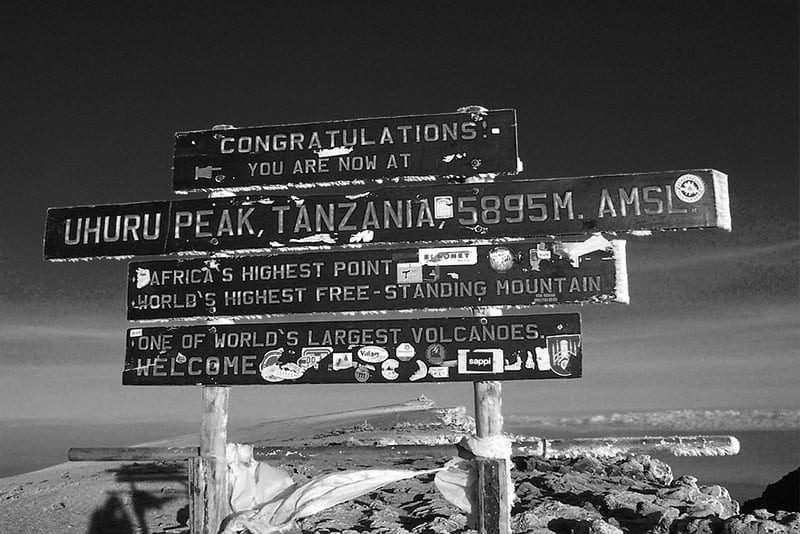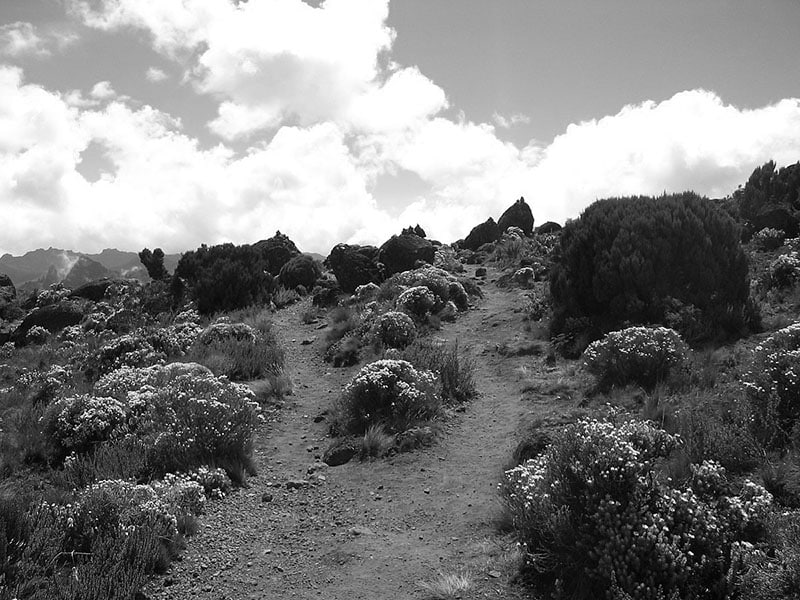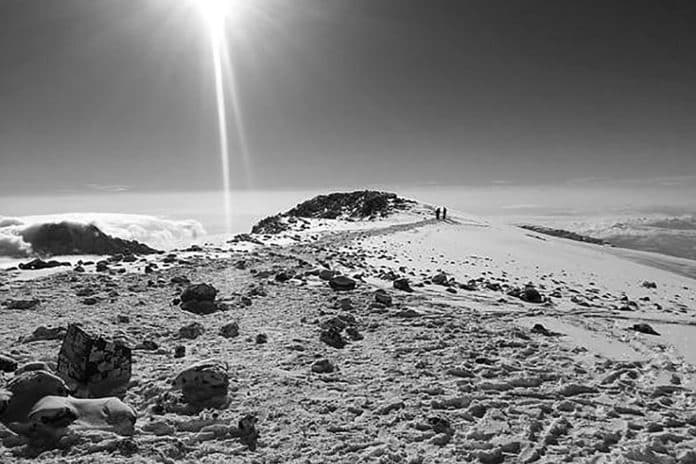Weather on Mt Kilimanjaro Today – Things You Need to Know
What to Expect From the Weather on Kilimanjaro
The Weather on Mt Kilimanjaro can change dramatically within a single day, but they don’t fluctuate much from season to season. Temperatures on Mount Kilimanjaro are more influenced by altitude and the time of day than the weather.
Why Hikers Need to Know the Current Weather on Mt Kilimanjaro
Nighttime temperatures can fall as low as 20 to -20 degrees Fahrenheit at the summit of the Mountain, Uhuru Peak, which is the highest point on the mountain (-7 to -29 degrees Celsius). If you’re planning to climb Mount Kili, you’ll need a good sense of the current weather on Mount Kilimanjaro, to know what to expect in terms of weather. Hikers need to be ready for anything, from sunny and pleasant to windy, chilly, and even snowy.
While the “dry” season is the best time to climb Kilimanjaro, rain and snow can occur at any time. You may find yourself struggling through sweltering heat one minute, and bundled up against the cold the next, as the temperature fluctuates drastically as you ascend.
At an elevation of 19,341 feet, Kilimanjaro is huge enough to support its weather systems. To put it simply, the mountain’s placement on the equator disrupts the trade winds that sweep across the ocean, carrying moisture to the top, therefore, disrupting the monsoons. As a result, the wind is forced to push up the summit, where it cools and brings rain and snow.
Is Mount Kilimanjaro’s Peak Covered in Snow?
South-east trade winds blame the long rainy season from March to May. Winds from the Indian Ocean bring rain to the lower reaches and snow to the mountain’s summit. The mountain’s southern slopes receive the most rain this time of year.

In November, the northeasterly air is responsible for short rains’; for this reason, the rainfall is less intense and less frequent than during long rains. During this, the northern slopes receive most of the rainfall.
Temperatures; Weather on Kilimanjaro
Temperatures on Mount Kilimanjaro are influenced significantly by height and time of day because of the mountain’s proximity to the equator. Around 70 to 80 degrees Fahrenheit is the typical temperature near the trailhead at the foot of Mount Kilimanjaro at 21 to 27 degrees Celsius. Temperatures begin to plummet as you ascend from the foot of the mountain, passing through each of the mountain’s five natural zones.
Kilimanjaro’s Uhuru Peak, located in the arctic zone, can see lows of 20 to -20 degrees Fahrenheit at night, i.e., -7 to -29 degrees Celsius. As a result, we strongly advise that you carry appropriate clothing for cool and rainy nights. Learn more about what to include in your day pack for Kilimanjaro by reading on.
There are Five Distinct Climate Zones Inhabiting Kilimanjaro
The weather on Kilimanjaro will begin to change as you rise through the various climate zones.
-
The Cultivation Ecoregion:
Covering elevation range of 2,600 feet to 6,000 feet or 800 to 1,800 meters, the amount of rain expected is between 20 to 70 inches of rainfall each year or 500 to 1,800 millimeters.
At the base of Kilimanjaro, an agricultural zone has been established. Annual rainfall is abundant in this area, mainly agricultural due to the fertile volcanic soil. You’ll travel through this area to make your way to the trailhead.
2. The Forest Ecoregion:
Covering elevation range of 6,000 feet to 9,200 feet or 1,800 to 2,800 meters, the amount of rain expected is between 79 to 40 inches of rainfall each year or 2,000 to 1,000 millimeters.
Most rainwater that falls on the mountain is absorbed by underground streams and springs, so we begin our trek in this tropical rainforest. Clouds and mists build up under the canopy of the trees, which are typically warm and moist. Clouds that are dense and murky underfoot are not uncommon.
3. The Heathland or Moorland Ecoregion:

Covering elevation range of 9,200 feet to 13,200 feet or 2,800 to 4,000 meters, the amount of rain expected is between 51 to 21 inches of rainfall each year or 1,300 to 530 millimeters.
After completing your trek through the woodlands, you’ll soon find yourself in the Heath and Moorland Zone. As the dense tropical jungle gives way to tall grasses and large heathers, you are exposed to the weather here.
The weather on Kilimanjaro moorland may be pleasant during the day but drop significantly at night. Hiking is more enjoyable when the air is less humid, the trails are drier, and the terrain is less muddy. The amount of rain on the mountain varies greatly, yet it can pour practically anywhere.
As temperatures drop at night and the sun spirals spike during the day, it is necessary to apply sunscreen to avoid skin damage caused by the sun’s rays.
4. The Alpine or High Desert Ecoregion:
Covering an elevation range of 13,200 feet to 16,500 feet or 4,000 to 5,000 meters, the amount of rain expected is 10 inches of rainfall each year or 250 millimeters.
It is only a matter of time before we arrive at the dry High Desert Zone, where just a few hardy plants can survive at an altitude where wind speeds continue to soar.
Despite being reasonably warm during the day, the weather on Kilimanjaro Alpines falls dramatically to low temperatures in the evening. It’s not unusual to camp this high in the mountains and be treated to a spectacular show under a sky full of stars when you do.
Views abound, but the paths are dustier than usual, making the air noticeably lighter.
5. The Arctic Ecoregion:
Covering an elevation range of 16,500 feet to 5,000 plus feet. The amount of rain expected is 4 inches of rainfall each year, or 100 millimeters.
At a height above 16,000 feet, the zone is considered the Arctic or Summit Zone. This lonely desert is characterized by large granite outcrops, glaciers, and volcanic scree, covered in snow.
This “high altitude” region has just around 49% of the oxygen present at sea level. In a hostile environment, this is a barren landscape.
There are roaring winds and the weather on top of Kilimanjaro Arctic zone has temperatures considerably below the freezing point at night on this mountain part. You can encounter ice and snow, it is freezing, even in the middle of the day, and the sun’s rays are powerful.
The dry air will quickly dehydrate you, so you’ll need to wear sunscreen on all exposed skin and warm clothing to keep your core temperature steady.
Here is further information about Kilimanjaro’s height.
Temperature Variations on Kilimanjaro
According to the time of year you visit Kilimanjaro, the weather can vary greatly. April to May are substantially more rainy than June through October on the mountain. The months of January to March are typically chilly.
Monthly Kilimanjaro Weather Reports
- June to September is the driest period of the year.
The peak is best climbed during the long dry season. The weather on Kilimanjaro summit is characterized by temperatures that are slightly lower than during the brief dry season of January to February, but overall conditions are excellent, and there is little risk of a downpour.
- October to November is the Short Wet period of the year.
There are sporadic downpours from October to December. The weather on Kilimanjaro in October has less certainty in the season’s timetable than during the protracted rains. Climbing should be avoided whenever possible during the wet season.
- January to February is a brief stretch of dry weather period of the year.
To climb Kilimanjaro at this time of year is a highly sought-after endeavor. The weather on Kilimanjaro in February involves temperatures that are often warmer than they are between June and October. Every year is different, though.
- March to May, we experience a long period of rain.
Toward the end of March, the Indian Ocean trade winds with the mountain, resulting in the long rains. We do not offer climbs during this time of year because of the risk of extreme rain, which could cause the trails to become unstable and dangerous.
Kilimanjaro’s Atmospheric Conditions at the Summit
Around midnight, the vast proportions of hikers begin their trip to the top. The trail is frequently covered in snow or ice, and the weather on Kilimanjaro is freezing; to get the best views of Mawenzi and the African plains, we attempt to be at Uhuru Peak before daybreak, when the sky is usually transparent. At night, temperatures can fall as low as -20 degrees Fahrenheit at the summit; Uhuru Point can be from -7 to -29 degrees Celsius. As a result of its enormous height, Kilimanjaro can influence the weather.
This article will comprehend path conditions, sleeping in the mountains, the expected weather on mount Kilimanjaro today and the best time of year to climb Mount Kilimanjaro.
For more articles related to climate change in Tanzania (weather), click here!
































